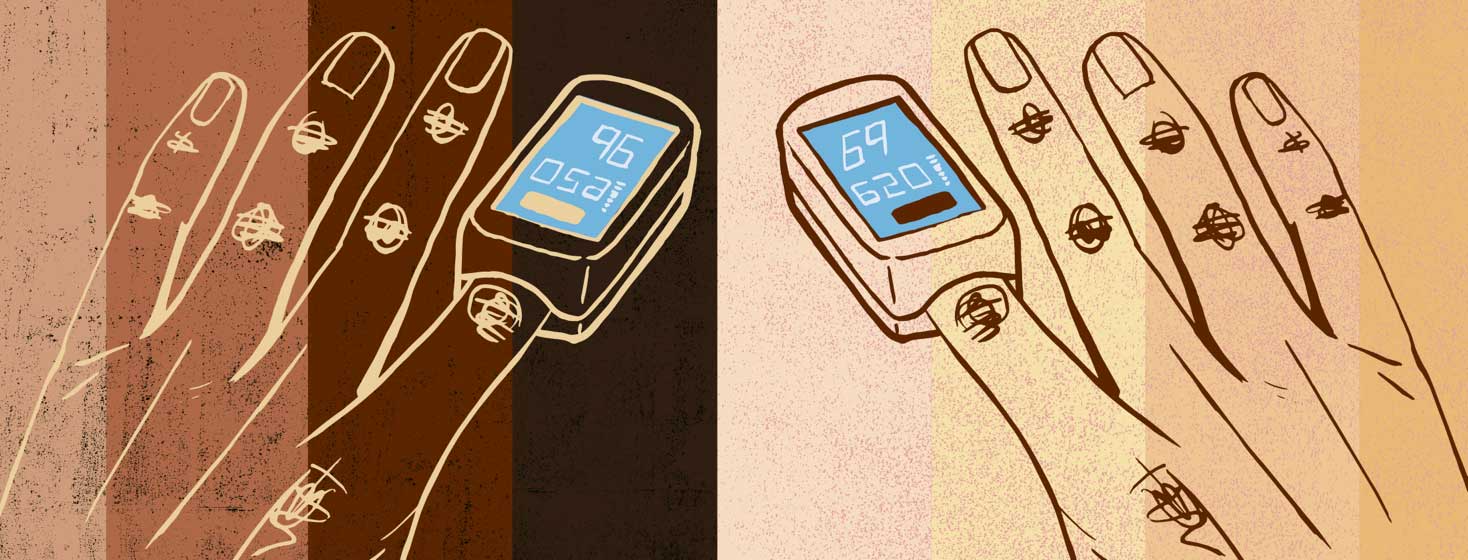Does Your Skin Color Affect An Oxygen Monitor?
As an asthma nerd, I am always trying keep up on the latest happenings in the asthma world. Even after 21 years of dealing with asthma, I can learn something new! The Hubster told me about a story he heard on Public Radio's 'All Things Considered.'1
In the spring of 2020, doctors in Detroit were being overwhelmed with COVID patients. When they ran out of beds, they had to transfer patients to the University of Michigan in Ann Arbor.1
One doctor in Ann Arbor noticed something weird when the Detroit COVID patients came into the Ann Arbor hospital. They were complaining of being short of breath, but when the doctors used a fingertip oxygen monitor (called a pulse oximeter), the oxygen level of those patients registered in the normal range. Hmmm.1
How does a pulse oximeter work?
A fingertip oximeter shows the 'oxygen saturation value,' meaning how much oxygen is in the blood. The normal range is 92% - 100%. An oximeter can give medical staff a quick idea of how you are doing.2 But Ann Arbor doctors noticed that the reading on the oximeter didn't seem to match up with how the Detroit patients looked or were feeling.
So doctors tried a more accurate test by taking blood out of an artery. That showed a different oxygen level than the oximeters. The blood from the artery showed low oxygen level - which matched how the patients were feeling.1 So what's going on?!
What's the difference with Detroit patients?
I haven't been to Detroit or Ann Arbor, so I felt like I was missing information. Why were the Ann Arbor doctors puzzled by the Detroit patients? I looked up both cities online and they are 45 miles apart - but they might as well be a world apart.
Working in public health, I look at data and ethnicity to see what programs my area needs. So I did the same for Michigan. It looks like Ann Arbor's doctors treat mostly white patients. Their population is 71% white, and 6.8% black.3 Then I looked up Detroit. Their population is 14% white and 78% black.4 So both cities are opposite of each other (of course there are others that make up a diverse population).
Skin color affected the pulse oximeter reading
The Ann Arbor doctors noticed that pulse oximeters were accurate on the light-skinned patients, but not on the dark-skinned patients. Hmmm. They started gathering data and noticed the oxygen readings in the dark-skinned patients were wrong almost three times as often as white patients.1 Yikes!
One Ann Arbor doctor suspects:1
"The reason behind this is that the color of light used in pulse oximeters can be absorbed by skin pigment."
Another doctor from Texas Dell Medical School says:1
"This is about skin color, not race."
That makes sense. We all have different skin colors. The Hubster is so pale, he's almost clear! But my skin is more of an olive color, yet we are both white. I have many friends who are brown and black, and they are all different colors too! And pulse oximeters could read differently, based on skin color.1
Should you trust your oximeter?
Doctors are also worried that people may rely ONLY on at-home oximeters - instead of going to the doctor. Since doctors know the oximeter readings can be wrong, they want people to concentrate on how they feel, not the number on the oximeter.1
My kids were in the hospital 12 times for asthma, and the ER docs would tell us to NOT rely on the oximeter alone. But - to pay attention to how my kids looked and felt. Were they short of breath? Did the skin pull in along their collar bone or rib cage? Were they paler than normal? Were their lips or fingernails darker color than normal? There are other things the ER doctors told us to look for.
My friend Theresa Cannizzaro is a long time respiratory therapist, and wrote a very helpful article about oximeters. She says that people with asthma have learned how to compensate over time. Sometimes our oxygen levels will look normal, even though we are struggling to breathe. She says that when the airways constrict with asthma, there can be enough oxygen that can flow through to give us a 'normal' oxygen reading. But you may still be struggling to breathe.5
Theresa, the Ann Arbor doctors, and my ER doctors all say the same thing: go by your symptoms, not the oximeter number!
An oximeter is just one tool of many to manage your asthma.

Join the conversation